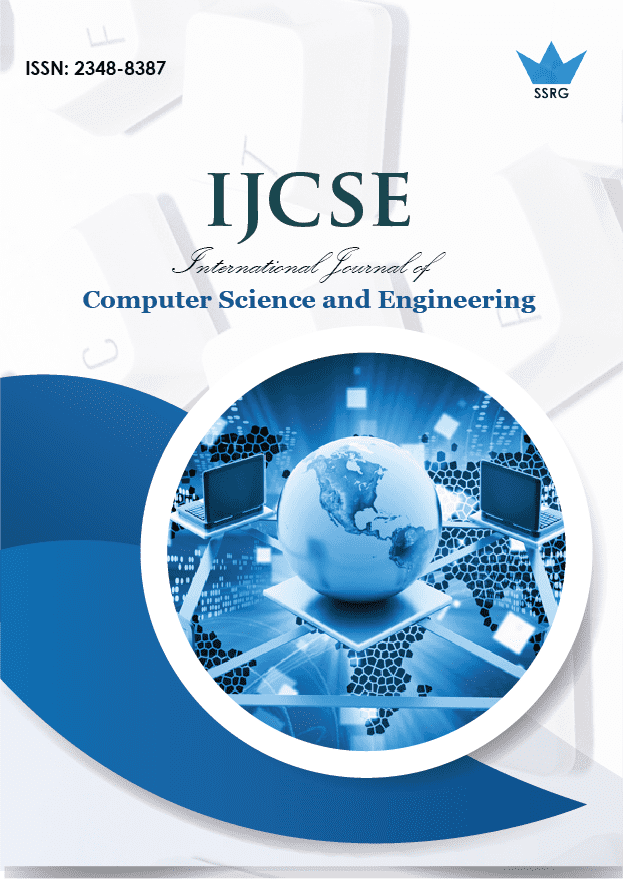Mining Educational Data to Predict Influential Factors Patterns for Student Dropout in Iraq

| International Journal of Computer Science and Engineering |
| © 2025 by SSRG - IJCSE Journal |
| Volume 12 Issue 7 |
| Year of Publication : 2025 |
| Authors : Ali Abdul Kadhim Aakool, Dahair Abbas Redha, Hayfaa Abdulzahra Atee |
How to Cite?
Ali Abdul Kadhim Aakool, Dahair Abbas Redha, Hayfaa Abdulzahra Atee, "Mining Educational Data to Predict Influential Factors Patterns for Student Dropout in Iraq," SSRG International Journal of Computer Science and Engineering , vol. 12, no. 7, pp. 43-49, 2025. Crossref, https://doi.org/10.14445/23488387/IJCSE-V12I7P105
Abstract:
This study investigates the application of data mining techniques to identify and predict influential patterns leading to student dropout in Iraq. Given the growing concern over high dropout rates and their socio-economic implications, a dataset was collected from 541 students across 43 elementary and secondary schools in Kut city. The study applied five supervised machine learning models: Decision Tree, Random Forest, Support Vector Machine, XGBoost, and Logistic Regression. After preprocessing and evaluation, the models were compared using accuracy, recall, precision, and ROC curve metrics. Results revealed that Logistic Regression and Random Forest models performed best, achieving 96% accuracy. The most significant factors contributing to dropout included academic performance (GPA, participation, failure history), institutional support, and socioeconomic factors. This research highlights the potential of educational data mining to proactively identify at-risk students and inform targeted interventions in the Iraqi education system.
Keywords:
Educational Data Mining, Student Dropout, Iraq.
References:
[1] Dilnavoz Shavkidinova, Feruza Suyunova, and Jasmina Kholdarova, “Education is an Important Factor in Human and Country Development,” Current Research Journal of Pedagogics, vol. 4, no. 1, pp. 27-34, 2023.
[CrossRef] [Google Scholar] [Publisher Link]
[2] Alan Seidman, College Student Retention: Formula for Student Success, Rowman & Littlefield, 2024.
[Google Scholar] [Publisher Link]
[3] Carlos A. Palacios et al., “Knowledge Discovery for Higher Education Student Retention Based on Data Mining: Machine Learning Algorithms and Case Study in Chile,” Entropy, vol. 23, no. 4, pp. 1-23, 2021.
[CrossRef] [Google Scholar] [Publisher Link]
[4] Dorina Kabakchieva et al., “Research Phases of University Data Mining Project Development,” Second International Conference S3T, 2010.
[Google Scholar] [Publisher Link]
[5] Jinan Hatem Issa, and Hazri Jamil, “Overview of the Education System in Contemporary Iraq,” European Journal of Social Sciences, vol. 14, no. 3, pp. 360-386, 2010.
[Google Scholar]
[6] Senik Tahir Mahmood, Hakim Qadir Taha, and Mahmood Muhammad Hamza, “Causes of School Dropouts in the Kurdistan Region of Iraq in 2021,” Journal of University of Raparin, vol. 12, no. 1, pp. 694-712, 2025.
[CrossRef] [Google Scholar] [Publisher Link]
[7] UNICEF, The Cost and Benefits of Education in Iraq: An Analysis of the Education Sector and Strategies to Maximize the Benefits of Education, 2017. [Online]. Available: https://reliefweb.int/report/iraq/cost-and-benefits-education-iraq-analysis-education-sector-and-strategies-maximize
[8] Thiago M. Barros et al., “Predictive Models for Imbalanced Data: A School Dropout Perspective,” Education Sciences, vol. 9, no. 4, pp. 1-17, 2019.
[CrossRef] [Google Scholar] [Publisher Link]
[9] Marmar Orooji, and Jianhua Chen, “Predicting Louisiana Public High School Dropout through Imbalanced Learning Techniques,” 18th IEEE International Conference on Machine Learning And Applications, Boca Raton, FL, USA, pp. 456-461, 2019. [CrossRef] [Google Scholar] [Publisher Link]
[10] Hassan, M. and T. Mirza, “Prediction of School Drop Outs with the Help of Machine Learning Algorithms,” SIG Science Journal, vol. 7, no. 7, pp. 253-263, 2020.
[Google Scholar] [Publisher Link]
[11] Yuda N. Mnyawami, Hellen H. Maziku, and Joseph C. Mushi, “Comparative Study of AutoML Approach, Conventional Ensemble Learning Method, and KNearest Oracle-AutoML Model for Predicting Student Dropouts in Sub-Saharan African Countries,” Applied Artificial Intelligence, vol. 36, no. 1, pp. 1-26, 2022.
[CrossRef] [Google Scholar] [Publisher Link]
[12] Kamal Samy Selim, and Sahar Saeed Rezk, “On Predicting School Dropouts in Egypt: A Machine Learning Approach,” Education and Information Technologies, vol. 28, no. 7, pp. 9235-9266, 2023.
[CrossRef] [Google Scholar] [Publisher Link]
[13] João Gabriel Corrêa Krüger, Alceu de Souza Britto Jr., and Jean Paul Barddal, “An Explainable Machine Learning Approach for Student Dropout Prediction,” Expert Systems with Applications, vol. 233, 2023.
[CrossRef] [Google Scholar] [Publisher Link]
[14] Okan Bulut et al., “Enhancing High-School Dropout Identification: A Collaborative Approach Integrating Human and Machine Insights,” Discover Education, vol. 3, no. 1, pp. 1-21, 2024.
[CrossRef] [Google Scholar] [Publisher Link]
[15] Siti Rafidah Sariman, Habibah Ab Jalil, and Erzam Marlisah, “Prediction Model of School Drop Out Factors Using Classification Techniques in Selangor,” Malaysian Journal of Social Sciences Humanities, vol. 9, no. 6, pp. 1-18, 2024.
[CrossRef] [Google Scholar] [Publisher Link]
[16] M. Awedh, and A. Mueen, “Early Identification of Vulnerable Students with Machine Learning Algorithms,” WSEAS Transactions on Information Scince and Applications, vol. 22, pp. 166-188, 2025.
[Google Scholar]
[17] Jiawei Han, Micheline Kamber, Jian Pei, Data Mining, Third Edition, Morgan Kaufmann: Boston, 2012.
[Google Scholar]

 10.14445/23488387/IJCSE-V12I7P105
10.14445/23488387/IJCSE-V12I7P105